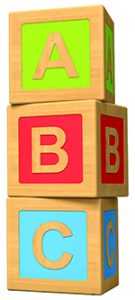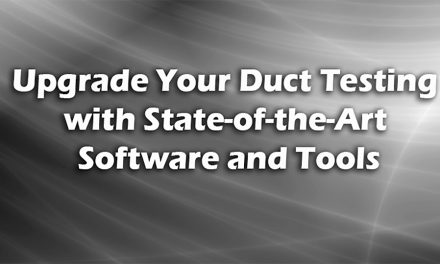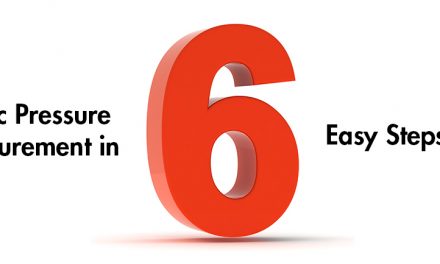
Dominick Guarino
Any major change in a company’s business model usually requires an associated investment in time, money, and other resources. Transforming your business into a High-Performance HVAC organization requires all three, but done right, your ROI (Return on Investment) will be fast and plentiful.
There are several variables that affect what it takes to build a Performance-Based Contracting? (PBC) company. These include the size of your organization, your mix of service versus replacement, residential versus commercial, add-on replacement versus new construction, and so forth. The examples in this article are based on the typical investment for a service/replacement company with 10-15 employees. You should be able to adjust the numbers based on your company size and business mix.
The four key factors that impact your investment in time, money, and human resources are:
- Training
- Tools and Instruments
- Marketing
- Process and Culture Change.

Your investment in training goes well beyond the cost of sending people to a class or bringing in a trainer for onsite training.
Let’s take a look at each factor and examine how it relates to the bigger picture.
Your Training Investment
Your investment in training goes well beyond the cost of sending people to a class or bringing in a trainer for onsite training.
High-quality training usually runs between $300-$400 per day per person. Believe it or not, this is not your biggest expense. One of the biggest costs is loss of income during the training. I bring this up not to deter you from sending people to training, but to help you get a realistic picture of your training investment.
Why is understanding these real costs important? Because as a good business person, you should always look at your return on any training investment, and how long it will take to pay for itself. Sure, there are many intangible, sometimes tough-to-quantify bene’ts of training, but when comparing one class to another, you must be able to evaluate the tangible, quanti’able returns for that investment. Everything else is a bonus.
One bene’t of Performance-Based training is your ROI can be immediate and tangible. A contractor from Phoenix, Arizona recently emailed me saying he’s selling air diagnostics at $295. He’s setting up duct renovation jobs 2-3 months out, ‘lling in his slower times with high margin work.
He wrote, ‘Since I started using some simple static pressure and airflow tools, things are exploding for me. I have ‘xed many problems other contractors said couldn’t be solved – and I’ve gained customers for life as a result!? Now there are some tangible, quanti’able returns on his investment! Not only is he getting paid well for his time to do the diagnostic work and solve problems, but he’s also essentially getting paid $295 to perform a sales call!
Get Paid for What You Know
When’s the last time a customer called you and asked if he or she could pay you for an estimate? Make no mistake, this contractor is providing real value with documented testing and suggested corrective actions. The difference is he’s getting paid for what he knows.
A company with 10-15 ‘eld employees including salespeople, typically invests between $10,000 and $15,000 a year in Performance-Based training and education. Remember, training is a never-ending process. In addition to attending formal classes that include certifications, it’s important to set up internal reinforcement training on an ongoing basis ‘ preferably weekly. It can be as basic as a half hour Friday morning class reviewing static pressure testing, or as involved as a half day in the ‘eld with three to four techs at a time.
Don’t forget about online training. High-quality web-based reinforcement training can really pay off. The key is to develop a culture of rewarding ongoing improvement through education.
 Investing in Tools and Instruments
Investing in Tools and Instruments
A set of quality diagnostic instruments for your salesperson and/or testing-and-balancing person includes a ‘ow hood, high-quality digital anemometer, static pressure kit, psychrometer, an infrared thermometer, and a few other tools. Your investment in these tools will run around $5,000.
 At some point, there’s no way around making this investment. You may be able to borrow or rent some tools to get started, but you’ll quickly ‘nd it impossible to conduct a performance-based sales call without owning the right tools.
At some point, there’s no way around making this investment. You may be able to borrow or rent some tools to get started, but you’ll quickly ‘nd it impossible to conduct a performance-based sales call without owning the right tools.
In addition, you’ll want to equip your service techs and installers with a few key test instruments, including a static pressure test kit, and a good quality instrument to check temperatures and wet bulb in ductwork. Remember, ‘If You Don’t Measure, You’re Just Guessing!?
Each of your technicians should also carry a high-quality combustion analyzer and draft gauge. It makes sense for your field people to own these tools, as they will take better care of their instruments when they invest in them personally.
As you begin spreading diagnostics through your company, your investment in new tools and instruments will increase.
But if done right, your payback should also increase tremendously.
Your Marketing Investment
One of the great things about selling High-Performance HVAC is it requires a much smaller investment in marketing than other products and services. Most of your leads for diagnostics, Air Upgrades, and renovation work will come from existing customers and referrals.
Your existing service customers and your maintenance agreement customers are your best source of leads that should give you the highest closing rates. When properly trained to test and share findings with customers, your service technicians can generate more leads than any other marketing investment.
Once customers experience the benefits of a highly performing system, they will gladly refer you to their family, friends, and neighbors. Be sure to ask for referrals as part of your post-sale follow-up process.
If you decide to invest additional marketing dollars to gain new customers, consider investing in marketing High-Performance tune-ups. Your messaging should explain the benefits your customers will get in terms of safety, health, comfort, and saving money on utility bills. Keep it simple and to the point, with slogans like, ‘Experience the High-Performance Service Difference with ABC Heating and Air.’
An additional marketing campaign could market your company as the problem solver for people with Comfort and Indoor Air Quality problems and high utility bills. Here you share how your installations are performance tested for guaranteed results.
Once you’ve trained your people and have the methods, tools, and instruments to stand behind this guarantee, you can truly rise above your competition.
Process and Culture Change
 This is by far the largest investment you’ll make in High-Performance Contracting, but it’s also the most important and valuable one. Tools can always be purchased, formal training will always be there, but knowledgeable people are hard to attract and keep. They are by far your most precious asset.
This is by far the largest investment you’ll make in High-Performance Contracting, but it’s also the most important and valuable one. Tools can always be purchased, formal training will always be there, but knowledgeable people are hard to attract and keep. They are by far your most precious asset.
Continuous investment and encouragement to grow their knowledge and skills are vital to your success, not only in selling performance, but in all aspects of your business.
Figure 1 illustrates the typical steps contractors take as they progress up the path of High Performance, along with the investment in training and tools needed along the way.
You can take these steps slightly out of sequence, but try to follow them as closely as possible – they are based on the experience of many people before you.
This example is based on a company currently doing $1 million in annual Service and Replacement sales. Done right, a company this size could experience as much as $600,000/year in very profitable additional Service, Replacement, and System Renovation revenue within the first two years.
The Culture Component
Each step shows the approximate investment, and the cumulative Return on Investment (ROI) you should experience as you achieve each goal. Of course, every company will experience different results based on the pace they implement, the length of their technical and sales learning curve, and how well their team embraces the culture change required for implementation.
There’s no doubt that creating a High-Performance contracting business requires investment, but what sustainable long-term business doesn’t? Once you’ve made it through the learning curve, your investment will continue to pay off, month after month, year after year, with your returns increasing exponentially.
Next month we’ll dig deeper into the specific training needed to get and keep your company on the profitable and rewarding path to High Performance!
|


 Catch Up On All the
Catch Up On All the









Recent Comments